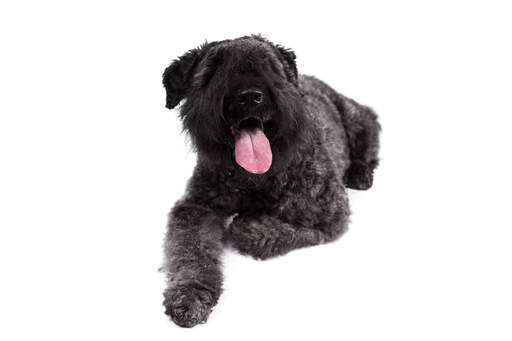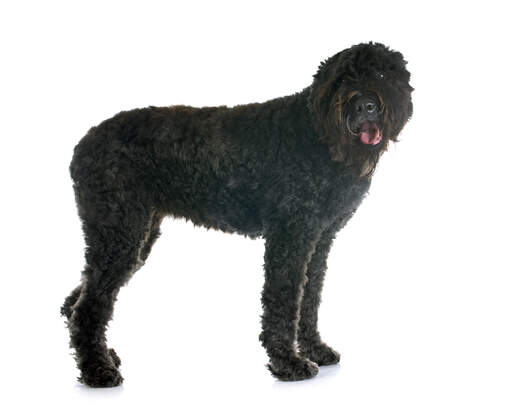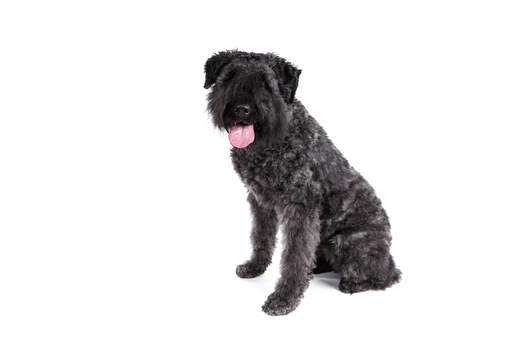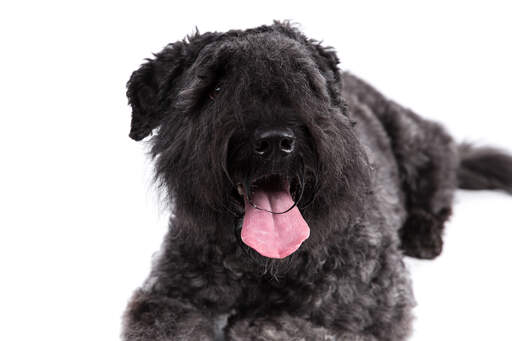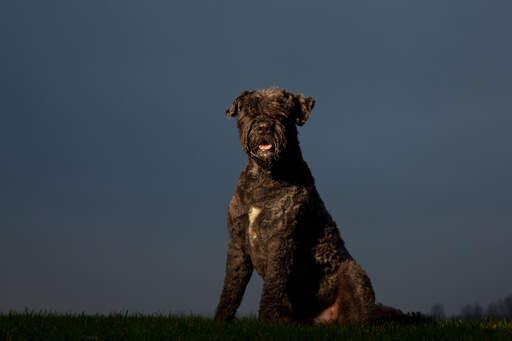Bouvier Des Flandres Dogs





History
The Bouvier des Flanders (BDF) breed was developed in the Medieval period in Flanders, Belgium. It was initially bred by Monks as a working dog, with the skills needed to drive cattle. Its ancestry is uncertain, but Irish Wolfhound and Scottish Deerhound are thought to be involved in the breed's genetic makeup, along with local mixed-breed farm dogs. Numbers of BDFs plummeted between World Wars I and II, even though the breed had been used as a messenger dog during the trench warfare. Breeding efforts were established in the 1940s, and the breed is now fairly common again.
Behaviour
The Bouvier des Flanders (the name means 'cow herder of Flanders') is strong, faithful, calm, gentle, and intelligent, making it a good, steady family pet. They enjoy playing with children, as long as the children respect the dog. Their guarding instincts make them good watch dogs, and they will always warn you when someone is close by. They need early socialization if hey are to accept strangers in the home. They get along fine with other dogs and cats in a house if they have been brought up with them. They are large dogs and therefore look quite intimidating, which is usually enough to deter trespassers. However, their sweet nature means they are friendly people they are properly introduced to.
The Bouvier needs firm and consistent training. They are clever and pick things up very quickly, but need a firm teacher who will not allow them to dominate play and raining sessions. They can become overbearing if the owner is too soft and will try and take over. Maintaining a firm, but fair dominance over the BDF is important to prevent aggression issues. They are instinctive guards, and take the job very seriously.
The BDF will try to herd other dogs when out playing. but this is usually done in fun and is nothing to worry about. With proper socialization around other dogs from a young age they should be fine when out walking, but some males can become dog aggressive, even if neutered. Taking them to puppy classes and later adult dog classes will help stop this problem.
With consistent training, the BDF will become very obedient, generally very responsive to their owner's wishes. Recall is excellent and they enjoy taking part in competitions such as Flyball, agility, and obedience.
The BDF needs lots of exercise and will appreciate a long run every day. They like to play games and are loyal, so a game of 'fetch' will tire them out and strengthen their bond with you.
This breed's coat needs regular grooming, at least three times a year. Brushing very few days will prevent the hair falling out and covering your furniture, and the fur around their feet needs regular trimming. They are hypoallergenic, good for allergy sufferers, molting fairly little.
The BDF is sturdy and stoical and have a very high pain threshold. They hide illness well, but are rarely sick.
Temperament
Bouvier des Flandres are steadfast, steady, and stoic. They are loving within their human family, but disinterested or mistrusting of strangers. This makes them good guard dogs. Being large and powerful they look quite formidable, but this does not mean they are aggressive. Sometimes they can be lazy, so regular walks and training are needed to keep them healthy in both body and mind.
Health Problems
The Bouvier des Flandres is prone to canine hip dysplasia (CHD), elbow dysplasia, cancer, heart disease, hypothyroidism, cataracts, and eye disease including progressive retinal atrophy (PRA: degeneration of the retina which can lead to blindness).
Breed Details
- Status: Common
- Life Expectancy: 10 - 12 years
- Weight: 60 - 120 lb
- Height: 22 - 28"
- Rare: No
- Coat: Medium - Hypoallergenic
- Grooming Requirements: Everyday
- Town or Country: Either
- Minimum Home Size: Large House
- Minimum Garden Size: Large Garden
- Breed Type: Working Dog
- Size: Large
- Energy Level: Medium
- Exercise Required: Up to 1 hour

